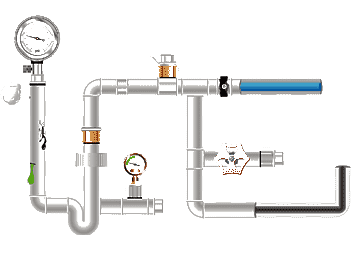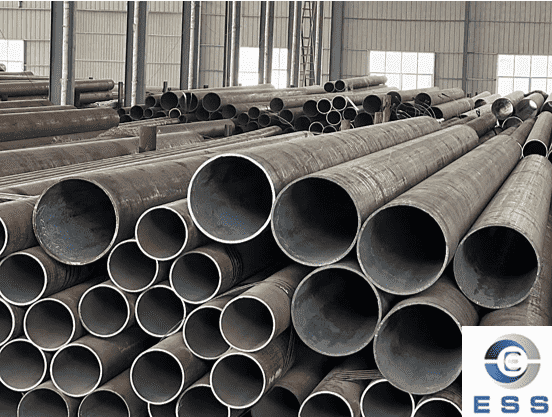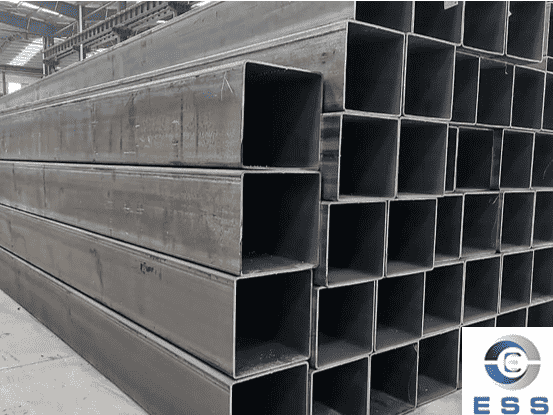
The API 5L standard is a pipeline steel
pipe standard developed by the American Petroleum Institute (API), which is
mainly used to regulate the production, delivery and transportation of steel
pipes. The API 5L standard is a widely used pipeline steel pipe standard in the
global oil and gas industry, covering seamless steel pipes and welded steel
pipes, including plain end pipes, threaded end pipes and flared end pipes, as
well as straight-through pipeline pipes (TFL) pipes and pipes with
prefabricated ends for special joints. It specifies the technical requirements,
inspection methods and delivery conditions of pipeline steel pipes to ensure
the quality and safety performance of the products. The following is a detailed
explanation of the API 5L standard:
API 5L Size Chart
|
API SPECIFICATION 5L
|
|
Permissible Specified Outside Diameter
and Specified Wall Thickness
|
|
Specified Outside Diameter
D
mm (in.)
|
Specified Wall Thickness
t
mm (in.)
|
|
Special Light Sizes a
|
Regular Sizes
|
|
≥ 10.3 (0.405) to < 13.7 (0.540)
|
—
|
≥ 1.7 (0.068) to ≤ 2.4 (0.094)
|
|
≥ 13.7 (0.540) to < 17.1 (0.675)
|
—
|
≥ 2.2 (0.088) to ≤ 3.0 (0.118)
|
|
≥ 17.1 (0.675) to < 21.3 (0.840)
|
—
|
≥ 2.3 (0.091) to ≤ 3.2 (0.125)
|
|
≥ 21.3 (0.840) to < 26.7 (1.050)
|
—
|
≥ 2.1 (0.083) to ≤ 7.5 (0.294)
|
|
≥ 26.7 (1.050) to < 33.4 (1.315)
|
—
|
≥ 2.1 (0.083) to ≤ 7.8 (0.308)
|
|
≥ 33.4 (1.315) to < 48.3 (1.900)
|
—
|
≥ 2.1 (0.083) to ≤ 10.0 (0.394)
|
|
≥ 48.3 (1.900) to < 60.3 (2.375)
|
—
|
≥ 2.1 (0.083) to ≤ 12.5 (0.492)
|
|
≥ 60.3 (2.375) to < 73.0 (2.875)
|
≥ 2.1 (0.083) to ≤ 3.6 (0.141)
|
> 3.6 (0.141) to ≤ 14.2 (0.559)
|
|
≥ 73.0 (2.875) to < 88.9 (3.500)
|
≥ 2.1 (0.083) to ≤ 3.6 (0.141)
|
> 3.6 (0.141) to ≤ 20.0 (0.787)
|
|
≥ 88.9 (3.500) to < 101.6 (4.000)
|
≥ 2.1 (0.083) to ≤ 4.0 (0.156)
|
> 4.0 (0.156) to ≤ 22.0 (0.866)
|
|
≥ 101.6 (4.000) to < 168.3 (6.625)
|
≥ 2.1 (0.083) to ≤ 4.0 (0.156)
|
> 4.0 (0.156) to ≤ 25.0 (0.984)
|
|
≥ 168.3 (6.625) to < 219.1 (8.625)
|
≥ 2.1 (0.083) to ≤ 4.0 (0.156)
|
> 4.0 (0.156) to ≤ 40.0 (1.575)
|
|
≥ 219.1 (8.625) to < 273.1 (10.750)
|
≥ 3.2 (0.125) to ≤ 4.0 (0.156)
|
> 4.0 (0.156) to ≤ 40.0 (1.575)
|
|
≥ 273.1 (10.750) to < 323.9 (12.750)
|
≥ 3.6 (0.141) to ≤ 5.2 (0.203)
|
> 5.2 (0.203) to ≤ 45.0 (1.771)
|
|
≥ 323.9 (12.750) to < 355.6 (14.000)
|
≥ 4.0 (0.156) to ≤ 5.6 (0.219)
|
> 5.6 (0.219) to ≤ 45.0 (1.771)
|
|
≥ 355.6 (14.000) to < 457 (18.000)
|
≥ 4.5 (0.177) to ≤ 7.1 (0.281)
|
> 7.1 (0.281) to ≤ 45.0 (1.771)
|
|
≥ 457 (18.000) to < 559 (22.000)
|
≥ 4.8 (0.188) to ≤ 7.1 (0.281)
|
> 7.1 (0.281) to ≤ 45.0 (1.771)
|
|
≥ 559 (22.000) to < 711 (28.000)
|
≥ 5.6 (0.219) to ≤ 7.1 (0.281)
|
> 7.1 (0.281) to ≤ 45.0 (1.771)
|
|
≥ 711 (28.000) to < 864 (34.000)
|
≥ 5.6 (0.219) to ≤ 7.1 (0.281)
|
> 7.1 (0.281) to ≤ 52.0 (2.050)
|
|
≥ 864 (34.000) to < 965 (38.000)
|
—
|
≥ 5.6 (0.219) to ≤ 52.0 (2.050)
|
|
≥ 965 (38.000) to < 1422 (56.000)
|
—
|
≥ 6.4 (0.250) to ≤ 52.0 (2.050)
|
|
≥ 1422 (56.000) to < 1829 (72.000)
|
—
|
≥ 9.5 (0.375) to ≤ 52.0 (2.050)
|
|
≥ 1829 (72.000) to < 2134 (84.000)
|
—
|
≥ 10.3 (0.406) to ≤ 52.0 (2.050)
|
|
NOTE Standardized
values for specified outside diameter and specified wall thickness of pipe
are given in ISO 4200 [7] and ASME B36.10M[8]
|
-
a Pipe having the combination of specified
outside diameter and specified wall thickness is defined as special
light size pipe; other combinations given in this table are defined as
regular size pipe.
|
API 5L Technical Requirements
1. Dimensions and deviations
The API 5L standard specifies the allowable
dimensional deviations of pipeline steel pipes to ensure the interchangeability
and consistency of steel pipes.
2. Mechanical properties
The standard requires steel pipes to have
specific mechanical properties such as tensile strength, yield strength,
elongation, etc. to meet the needs of different application scenarios.
|
Standard
|
Model
|
Tensile
Strength (MPa)
|
Yield
Strength (MPa)
|
Yield
Ratio
|
Elongation
(%)
|
0℃ Impact Energy
Akv(J)
|
Heat
Treatment Method
|
|
API
SPEC 5L
|
X42
|
≥415
|
290~440
|
≤0.80
|
21
|
≥40
|
Normalizing
|
|
X52
|
≥460
|
360~510
|
≤0.85
|
20
|
≥40
|
Normalizing
|
|
X60
|
≥520
|
415~565
|
≤0.85
|
18
|
≥40
|
Normalizing
|
|
X65
|
≥535
|
450~570
|
≤0.90
|
18
|
≥40
|
Quenching + Tempering
|
|
X70
|
≥570
|
485~605
|
≤0.90
|
18
|
≥40
|
Quenching
+ Tempering
|
3. Chemical composition
There are clear requirements for the
chemical composition of steel pipes to ensure the corrosion resistance and
mechanical properties of steel pipes.
Chemical Composition for PSL 1 pipe with t ≤ 0.984”
|
Steel Grade
|
Mass fraction, % based on heat and
product analyses a,g
|
|
|
C
|
Mn
|
P
|
S
|
V
|
Nb
|
Ti
|
|
|
max b
|
max b
|
max
|
max
|
max
|
max
|
max
|
|
|
Seamless Pipe
|
|
|
A
|
0.22
|
0.90
|
0.03
|
0.03
|
–
|
–
|
–
|
|
|
B
|
0.28
|
1.20
|
0.03
|
0.03
|
c,d
|
c,d
|
d
|
|
|
X42
|
0.28
|
1.30
|
0.03
|
0.03
|
d
|
d
|
d
|
|
|
X46
|
0.28
|
1.40
|
0.03
|
0.03
|
d
|
d
|
d
|
|
|
X52
|
0.28
|
1.40
|
0.03
|
0.03
|
d
|
d
|
d
|
|
|
X56
|
0.28
|
1.40
|
0.03
|
0.03
|
d
|
d
|
d
|
|
|
X60
|
0.28 e
|
1.40 e
|
0.03
|
0.03
|
f
|
f
|
f
|
|
|
X65
|
0.28 e
|
1.40 e
|
0.03
|
0.03
|
f
|
f
|
f
|
|
|
X70
|
0.28 e
|
1.40 e
|
0.03
|
0.03
|
f
|
f
|
f
|
|
|
Welded Pipe
|
|
|
A
|
0.22
|
0.90
|
0.03
|
0.03
|
–
|
–
|
–
|
|
|
B
|
0.26
|
1.20
|
0.03
|
0.03
|
c,d
|
c,d
|
d
|
|
|
X42
|
0.26
|
1.30
|
0.03
|
0.03
|
d
|
d
|
d
|
|
|
X46
|
0.26
|
1.40
|
0.03
|
0.03
|
d
|
d
|
d
|
|
|
X52
|
0.26
|
1.40
|
0.03
|
0.03
|
d
|
d
|
d
|
|
|
X56
|
0.26
|
1.40
|
0.03
|
0.03
|
d
|
d
|
d
|
|
|
X60
|
0.26 e
|
1.40 e
|
0.03
|
0.03
|
f
|
f
|
f
|
|
|
X65
|
0.26 e
|
1.45 e
|
0.03
|
0.03
|
f
|
f
|
f
|
|
|
X70
|
0.26e
|
1.65 e
|
0.03
|
0.03
|
f
|
f
|
f
|
|
|
a. Cu ≤ = 0.50% Ni; ≤ 0.50%; Cr ≤ 0.50%;
and Mo ≤ 0.15%,
b. For each reduction of 0.01% below the specified maximum concentration for
carbon, an increase of 0.05% above the specified maximum concentration for Mn
is permissible, up to a maximum of 1.65% for grades ≥ L245 or B, but ≤ L360
or X52; up to a maximum of 1.75% for grades > L360 or X52, but < L485
or X70; and up to a maximum of 2.00% for grade L485 or X70.,
c. Unless otherwise agreed NB + V ≤ 0.06%,
d. Nb + V + TI ≤ 0.15%,
e. Unless otherwise agreed.,
f. Unless otherwise agreed, NB + V = Ti ≤ 0.15%,
g. No deliberate addition of B is permitted and the residual B ≤ 0.001%
|
|
|
|
Chemical Composition for PSL 2 pipe with t ≤ 0.984”
|
Steel Grade
|
Mass fraction, % based on heat and
product analyses
|
Carbon Equiv a
|
|
|
C
|
Si
|
Mn
|
P
|
S
|
V
|
Nb
|
Ti
|
Other
|
CE IIW
|
CE Pcm
|
|
|
max b
|
max
|
max b
|
max
|
max
|
max
|
max
|
max
|
max
|
max
|
|
|
Seamless and Welded Pipe
|
|
|
BR
|
0.24
|
0.40
|
1.20
|
0.025
|
0.015
|
c
|
c
|
0.04
|
e,l
|
0.43
|
0.25
|
|
|
X42R
|
0.24
|
0.40
|
1.20
|
0.025
|
0.015
|
0.06
|
0.05
|
0.04
|
e,l
|
0.43
|
0.25
|
|
|
BN
|
0.24
|
0.40
|
1.20
|
0.025
|
0.015
|
c
|
c
|
0.04
|
e,l
|
0.43
|
0.25
|
|
|
X42N
|
0.24
|
0.40
|
1.20
|
0.025
|
0.015
|
0.06
|
0.05
|
0.04
|
e,l
|
0.43
|
0.25
|
|
|
X46N
|
0.24
|
0.40
|
1.40
|
0.025
|
0.015
|
0.07
|
0.05
|
0.04
|
d,e,l
|
0.43
|
0.25
|
|
|
X52N
|
0.24
|
0.45
|
1.40
|
0.025
|
0.015
|
0.10
|
0.05
|
0.04
|
d,e,l
|
0.43
|
0.25
|
|
|
X56N
|
0.24
|
0.45
|
1.40
|
0.025
|
0.015
|
0.10f
|
0.05
|
0.04
|
d,e,l
|
0.43
|
0.25
|
|
|
X60N
|
0.24f
|
0.45f
|
1.40f
|
0.025
|
0.015
|
0.10f
|
0.05f
|
0.04f
|
g,h,l
|
As agreed
|
|
|
BQ
|
0.18
|
0.45
|
1.40
|
0.025
|
0.015
|
0.05
|
0.05
|
0.04
|
e,l
|
0.43
|
0.25
|
|
|
X42Q
|
0.18
|
0.45
|
1.40
|
0.025
|
0.015
|
0.05
|
0.05
|
0.04
|
e,l
|
0.43
|
0.25
|
|
|
X46Q
|
0.18
|
0.45
|
1.40
|
0.025
|
0.015
|
0.05
|
0.05
|
0.04
|
e,l
|
0.43
|
0.25
|
|
|
X52Q
|
0.18
|
0.45
|
1.50
|
0.025
|
0.015
|
0.05
|
0.05
|
0.04
|
e,l
|
0.43
|
0.25
|
|
|
X56Q
|
0.18
|
0.45f
|
1.50
|
0.025
|
0.015
|
0.07
|
0.05
|
0.04
|
e,l
|
0.43
|
0.25
|
|
|
X60Q
|
0.18f
|
0.45f
|
1.70f
|
0.025
|
0.015
|
g
|
g
|
g
|
h,l
|
0.43
|
0.25
|
|
|
X65Q
|
0.18f
|
0.45f
|
1.70f
|
0.025
|
0.015
|
g
|
g
|
g
|
h,l
|
0.43
|
0.25
|
|
|
X70Q
|
0.18f
|
0.45f
|
1.80f
|
0.025
|
0.015
|
g
|
g
|
g
|
h,l
|
0.43
|
0.25
|
|
|
X80Q
|
0.18f
|
0.45f
|
1.90f
|
0.025
|
0.015
|
g
|
g
|
g
|
i,j
|
As agreed
|
|
|
X90Q
|
0.16f
|
0.45f
|
1.90
|
0.020
|
0.010
|
g
|
g
|
g
|
j,k
|
As agreed
|
|
|
X100Q
|
0.16f
|
0.45f
|
1.90
|
0.020
|
0.010
|
g
|
g
|
g
|
j,k
|
As agreed
|
|
|
Welded Pipe
|
|
|
BM
|
0.22
|
0.45
|
1.20
|
0.025
|
0.015
|
0.05
|
0.05
|
0.04
|
e,l
|
0.43
|
0.25
|
|
|
X42M
|
0.22
|
0.45
|
1.30
|
0.025
|
0.015
|
0.05
|
0.05
|
0.04
|
e,l
|
0.43
|
0.25
|
|
|
X46M
|
0.22
|
0.45
|
1.30
|
0.025
|
0.015
|
0.05
|
0.05
|
0.04
|
e,l
|
0.43
|
0.25
|
|
|
X52M
|
0.22
|
0.45
|
1.40
|
0.025
|
0.015
|
d
|
d
|
d
|
e,l
|
0.43
|
0.25
|
|
|
X56M
|
0.22
|
0.45f
|
1.40
|
0.025
|
0.015
|
d
|
d
|
d
|
e,l
|
0.43
|
0.25
|
|
|
X60M
|
0.12f
|
0.45f
|
1.60f
|
0.025
|
0.015
|
g
|
g
|
g
|
h,l
|
0.43
|
0.25
|
|
|
X65M
|
0.12f
|
0.45f
|
1.60f
|
0.025
|
0.015
|
g
|
g
|
g
|
h,l
|
0.43
|
0.25
|
|
|
X70M
|
0.12f
|
0.45f
|
1.70f
|
0.025
|
0.015
|
g
|
g
|
g
|
h,l
|
0.43
|
0.25
|
|
|
X80M
|
0.12f
|
0.45f
|
1.85f
|
0.025
|
0.015
|
g
|
g
|
g
|
i,j
|
.043f
|
0.25
|
|
|
X90M
|
0.1
|
0.55f
|
2.10f
|
0.02
|
0.01
|
g
|
g
|
g
|
i,j
|
–
|
0.25
|
|
|
X100M
|
0.1
|
0.55f
|
2.10f
|
0.02
|
0.01
|
g
|
g
|
g
|
i,j
|
–
|
0.25
|
|
|
a. SMLS t>0.787”, CE limits shall be
as agreed. The CEIIW limits applied fi C > 0.12% and the CEPcm limits
apply if C ≤ 0.12%,
b. For each reduction of 0.01% below the specified maximum for C, an increase
of 0.05% above the specified maximum for Mn is permissible, up to a maximum
of 1.65% for grades ≥ L245 or B, but ≤ L360 or X52; up to a maximum of 1.75%
for grades > L360 or X52, but < L485 or X70; up to a maximum of
2.00% for grades ≥ L485 or X70, but ≤ L555 or X80; and up to a maximum of
2.20% for grades > L555 or X80.,
c. Unless otherwise agreed Nb = V ≤ 0.06%,
d. Nb = V = Ti ≤ 0.15%,
e. Unless otherwise agreed, Cu ≤ 0.50%; Ni ≤ 0.30% Cr ≤ 0.30% and Mo ≤ 0.15%,
f. Unless otherwise agreed,
g. Unless otherwise agreed, Nb + V + Ti ≤ 0.15%,
h. Unless otherwise agreed, Cu ≤ 0.50% Ni ≤ 0.50% Cr ≤ 0.50% and MO ≤ 0.50%,
i. Unless otherwise agreed, Cu ≤ 0.50% Ni ≤ 1.00% Cr ≤ 0.50% and MO ≤ 0.50%,
j. B ≤ 0.004%,
k. Unless otherwise agreed, Cu ≤ 0.50% Ni ≤ 1.00% Cr ≤ 0.55% and MO ≤ 0.80%,
l. For all PSL 2 pipe grades except those grades with footnotes j noted, the
following applies. Unless otherwise agreed no intentional addition of B is permitted
and residual B ≤ 0.001%.
|
|
|
|
4. Nondestructive testing
API 5L standard requires nondestructive
testing of steel pipes, such as ultrasonic testing, radiographic testing, etc.,
to detect defects and cracks inside the steel pipes.
API 5L Standard Grade
According to API 5L standard, steel pipes
can be divided into two grades: API5L PSL1 and API SL PSL2. Among them, PSI
(Product Specification Levels) refers to product specification levels
1. API 5L PSL1
API 5L PSL1 requires that the chemical
composition, mechanical properties and dimensions of steel pipes meet relevant
requirements. This grade of steel pipe is suitable for conventional
transportation applications such as natural gas, oil and water.
2. API 5L PSL2
Compared with PSL1, API 5L PSL2 has
stricter requirements for steel pipes. It has higher requirements on chemical
composition, mechanical properties and size restrictions. In addition, PSL2
also provides additional technical requirements such as impact testing,
non-destructive testing and weld qualification rate.
API 5L Pipe Covered Grades
API 5L Grade B Pipe
API 5L X56 Pipe
API 5L X42 Pipe
API 5L X60 Pipe
API 5L X46 Pipe
API 5L X65 Pipe
API 5L X52 Pipe
API 5L X70 Pipe
API 5L X42 Seamless Steel Pipe
1. API 5L X42 PSL1 and PSL2 standard
API 5L X42 PSL1 and API 5L X42 PSL2 are two different product specification levels, designed for specific operational needs:
API 5L X42 PSL1
This is the standard quality grade, typically used for general pipeline transportation. Its testing requirements are less stringent, and mechanical property limitations are lower. PSL1 is generally used in applications with less stringent performance requirements and pipeline performance requirements. It is suitable for low-pressure applications and shorter pipeline routes.
API 5L X42 PSL2
This grade of steel pipe offers superior mechanical properties, more stringent testing, and more refined chemical composition control. It is suitable for critical applications with extremely high requirements for toughness, durability, and quality control. PSL2 steel pipe must undergo Charpy impact testing, non-destructive testing, and more stringent chemical composition analysis. These steel pipes are ideal for extreme weather conditions, high-pressure environments, and long-distance fluid transportation.
2. API 5L X42 equivalent materials
API 5L X42 steel is equivalent to the following international material standards:
ASTM A106 Class B: Seamless carbon steel tubing designed for high-temperature applications.
ASTM A53 Class B: Welded and seamless carbon steel tubing for general structural and pressure applications.
EN 10208-2 L290NB: European standard for steel tubing for piping systems.
ISO 3183 L290: International standard, equivalent to API 5L X42.
DIN 17172 StE 290.7: German standard for steel tubing for pressure applications.
3. Key advantages of API 5L X42 steel pipe
High strength and durability: Ensures long-term stable operation in harsh environments.
Excellent corrosion and abrasion resistance: Protects against chemical and mechanical abrasion.
PSL1 and PSL2 versions available to meet different project requirements: Meets various operational needs.
Cost-effective piping solutions: Providing affordable options for large piping projects.
API 5L X42 tensile and yield strength ensures reliability: Ensuring structural integrity and operational safety.
Multiple manufacturing methods: Available in various variations including seamless, ERW, LSAW, and SSAW to meet diverse application needs.
Customizable coatings: Offers a variety of protective coatings to extend service life.
Compliant with global standards: Meets API, ASTM, and EN regulations.
4. API 5L X42 pipe specification
The pipes ranges in PSL1, PSL2, sour services, for onshore and offshore.
API 5L X42 PSL1, in common delivery condition of As Rolled.
API 5L X42N/M/Q, for PSL2 pipe with delivery condition of N, M, and Q.
API 5L X42NS/MS/QS, used for sour services pipelines.
Suffix Letter Means
R: As rolled
N: Normalizing rolled, Normalized formed, Normalized
Q: Tempered and quenched
M: Thermomechanical rolled or thermomechanical formed
S: Sour Service
Inspection and Delivery
1. Inspection methods
The API 5L standard specifies a variety of
inspection methods, including appearance inspection, dimensional measurement,
mechanical properties testing, chemical composition analysis, etc., to ensure
that the quality of steel pipes meets the standard requirements.
2. Delivery conditions
According to the API 5L standard, the
delivery conditions of steel pipes include requirements such as heat treatment
status, surface quality, packaging and marking.
|
PSL
|
Delivery Condition
|
Pipe grade
|
|
PSL1
|
As-rolled, normalized, normalizing formed
|
A
|
|
|
As-rolled, normalizing rolled,
thermomechanical rolled, thermo-mechanical formed, normalizing formed,
normalized, normalized and tempered or if agreed Q&T SMLS only
|
B
|
|
|
As-rolled, normalizing rolled,
thermomechanical rolled, thermo-mechanical formed, normalizing formed,
normalized, normalized and tempered
|
X42, X46, X52, X56, X60, X65, X70
|
|
PSL 2
|
As-rolled
|
BR, X42R
|
|
|
Normalizing rolled, normalizing formed,
normalized or normalized and tempered
|
BN, X42N, X46N, X52N, X56N, X60N
|
|
|
Quenched and tempered
|
BQ, X42Q, X46Q, X56Q, X60Q, X65Q, X70Q,
X80Q, X90Q, X100Q
|
|
|
Thermomechanical rolled or
thermomechanical formed
|
BM, X42M, X46M, X56M, X60M, X65M, X70M,
X80M
|
|
|
Thermomechanical rolled
|
X90M, X100M, X120M
|
|
|
The suffice (R, N, Q or M) for PSL2
grades, belongs to the steel grade
|
|
Scope of Application
1. Main use
API 5L standard pipeline steel pipes are
mainly used to transport fluid media such as crude oil, refined oil, natural
gas, as well as other fluids such as water, sewage, and steam.
2. Application areas
This standard is applicable to many fields
such as petroleum, petrochemicals, natural gas, natural gas chemicals,
electricity, water conservancy, etc., especially in long-distance pipeline
transportation systems. It plays an important role.
Summary
In summary, the API 5L standard is an
indispensable pipeline steel pipe standard in the global oil and gas industry.
It stipulates the dimensions, grades, technical requirements, inspection
methods and delivery conditions of pipeline steel pipes to ensure the quality
and safety performance of the pipe.









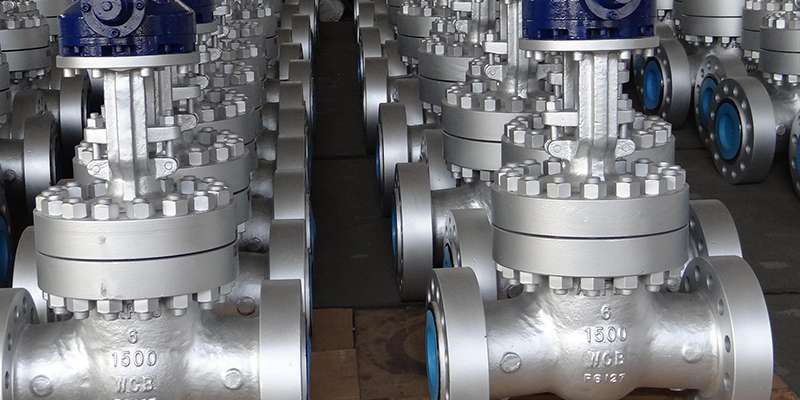



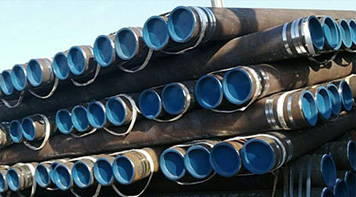 Eastern Steel Manufacturing Co.,Ltd not only improve product production and sales services, but also provide additional value-added services. As long as you need, we can complete your specific needs together.
Eastern Steel Manufacturing Co.,Ltd not only improve product production and sales services, but also provide additional value-added services. As long as you need, we can complete your specific needs together.
